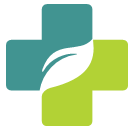Talking with a colleague at UNC Healthcare (currently undergoing an EPIC adventure), I’m reminded that most healthcare organizations approach EHR transitions from a misguided perspective. Driven by software vendors’ implementation teams, providers try to recreate old workflows with the new systems. The new processes, rather than being rethought for efficiency and effectiveness, are designed to closely resemble the old way of doing things, and either become more complex or, worse, fail to capture the massive power of EHRs. Occasionally, when blocked by the software (obviously not designed by anyone remotely connected to practice), a new process is developed and thrust upon staff. Not only does this complicate workflow, it tempts line staff to develop workarounds to retain their old way of functioning.
Predictably, providers struggle to realize the benefit of EHRs. In a recent study, HealthLeaders Media reported 27% of healthcare leaders felt EHR systems were a waste of money. In a great article written several years ago, Jon Roberts aptly describes the dilemma still true today:
Traditionally hospital staff learn to use a new IT system the following way: The IT vendor designs classes to teach staff how to use the new system. Classroom time and content vary based on the job that each person does. Some staff are anointed as “super-users” and meant to be a resource to the standard “end users” who will need help in the future. Once the coursework is completed, staff are given time to practice using the system, often with super-users present to help navigate through problems.
The problem with this approach is a matter of context. People are taught how to use the new system according to the system’s functionality, not according to how staff will use the system to do their job. That’s a major distinction. I’ve observed many of these classroom sessions, and when the instructor asks, “Does anybody have any questions?” the room gets quiet. People don’t know what they don’t know.
When the system is up and running, it becomes immediately clear to staff when they have a question, but it is rarely clear where to turn, and patients are waiting. This is when the hidden costs of a new EMR begin to reveal themselves and productivity drops.
I remember working with one community that had adopted an EHR several years before. CNAs charted bowel movements in the point-of-care application and in a notebook at the nurses station. Then, at shift change, the information was communicated yet again, verbally, to the next shift. Even though the EHR provided a system for tracking bowel movements, the nurses had found it too cumbersome to use the reporting feature and thus recreated a paper binder. Then, because not everyone looked at the binder, the information was communicated in person.
When the process was redesigned to incorporate the customized alerting feature of the EHR, the nurses were provided with more timely notice of needed action, and 1.25 hours of daily CNA time was recovered.
What can be done?
First, we need to stop thinking of the process of bringing on an EHR as implementation and start thinking about it as adoption. It’s a new way of doing work: expect it to be complicated; expect the EHR vendor to misunderstand your community; expect hiccups and roadblocks and brick walls. Implementation focuses on a “go-live” date, whereas adoption focuses on successfully achieving certain predetermined outcomes. Thus, adoption continues long after an implementation ends.
Second, evaluate your current practices carefully. Examine the new workflows proposed by the EHR system. Collaborative redesign workflows to integrate EHR tasks into other work without relying on one-to-one transition from old paper-based recording to electronic means.
Third, ensure the training plan is reflective of future users. The train-the-trainer model used by most vendors misunderstands communications practices, adult learning styles, shift-based schedules, and workplace dynamics. Instead, training should be designed for specific roles and tasks and include a process of evaluating mastery.
Finally, leadership must commit to actively supporting, monitoring, and adjusting the adoption as an ongoing priority, not as a delegated task or finite project. When adopted correctly, EHRs can vastly simplify cumbersome processes, drive enormous efficiencies, and increase staff satisfaction. Incorrectly, EHRs can drive exactly the opposite.
For further reading, I strongly suggest Beyond Implementation: A Prescription for Lasting EMR Adoption.

